How to Fertilize Dogwood Trees Effectively: Ensure Lush, Vibrant Growth
- April 19, 2024
- 0 comment
Learn how to fertilize Dogwood trees effectively with our easy-to-follow guide. Ensure lush, vibrant growth with the right nutrients and techniques. Fertilizing Dogwood trees correctly is an art that balances science with a touch of nature’s intuition. In this guide, we’ll take you through the essential steps to master how to fertilize your Dogwood trees, ensuring they not only survive but truly thrive. From understanding the specific nutrient needs of these elegant trees to identifying the optimal fertilization schedule, we provide all the information you need to promote lush, vibrant growth and breathtaking floral displays.
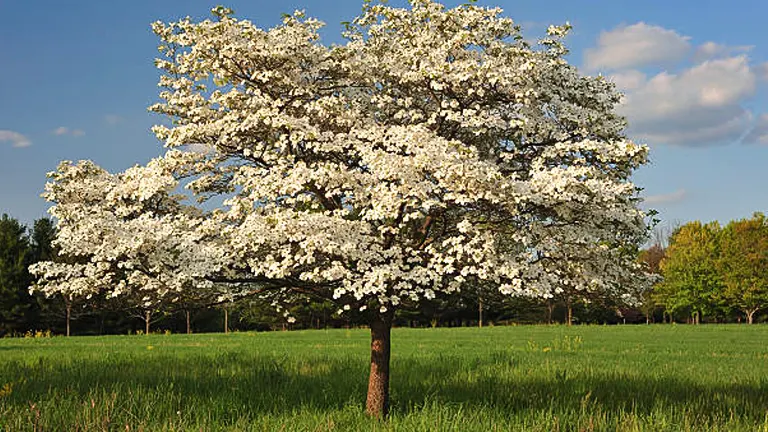
Whether you’re aiming to enhance the natural beauty of your outdoor space or simply ensure the health and longevity of your Dogwood trees, our straightforward advice will pave the way to success. Join us as we explore the key to unlocking the full potential of your Dogwood trees through effective fertilization.
Table of Contents
- Understanding Dogwood Tree Nutrition
- Selecting the Appropriate Fertilizer
- Seasonal Fertilization Schedule
- Step-by-Step Guides on How to Fertilize Dogwood Trees
- Application Techniques for Optimal Uptake
- Adjusting Practices for Tree Health and Environmental Factors
- Common Mistakes to Avoid
- Holistic Fertilization Strategies
- Precision in Fertilizer Application
- Adaptive Fertilization Based on Environmental Feedback
- Advanced Techniques and Innovations in Fertilization
- Conclusion
- FAQs
Understanding Dogwood Tree Nutrition
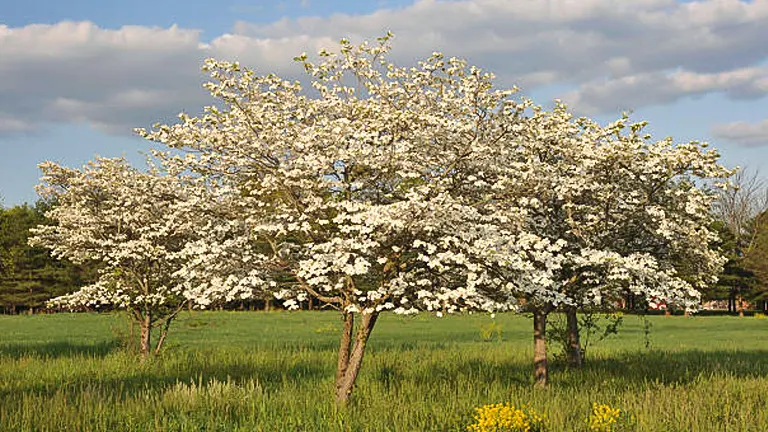
Macronutrients: The Core of Dogwood Tree Health
- Nitrogen (N): Paramount for foliage and stem development, nitrogen helps synthesize proteins and chlorophyll, essential for photosynthesis. Deficiency in nitrogen typically manifests as chlorosis, leading to the yellowing of leaves and poor growth.
- Phosphorus (P): This nutrient plays a critical role in energy transfer, root development, and the flowering process. Insufficient phosphorus can result in stunted growth, delayed bud break, and frail root systems.
- Potassium (K): Crucial for water regulation and enzymatic processes, potassium bolsters the tree’s tolerance to stress and disease. Signs of potassium deficiency include leaf scorch and marginal browning, alongside general weakness in the tree’s structural integrity.
Micronutrients: Vital for Preventing Deficiencies
- Iron (Fe): Iron is essential for chlorophyll synthesis and is necessary for effective photosynthesis. Iron deficiency often results in chlorosis, notably in younger leaves.
- Zinc (Zn): Zinc plays a significant role in the synthesis of growth hormones and enzyme systems. Deficiency symptoms include stunted growth and leaf distortion, often characterized by rosetting.
- Manganese (Mn): Necessary for photosynthesis and nitrogen metabolism, manganese deficiency is visible through interveinal chlorosis and reduced growth rates.
Nutrient Application Guidelines
| Nutrient | Role in Plant Health | Deficiency Symptoms | Recommended Application |
|---|---|---|---|
| Nitrogen (N) | Foliage and stem development | Pale or yellow leaves, slow growth | Apply 1-2 lbs per 1000 sq ft annually |
| Phosphorus (P) | Root development, flowering | Delayed bud break, weak roots | Apply 0.5-1 lbs per 1000 sq ft annually |
| Potassium (K) | Water regulation, stress resistance | Leaf scorch, weak stems | Apply 1-2 lbs per 1000 sq ft annually |
| Iron (Fe) | Chlorophyll synthesis, photosynthesis | Yellow leaves with green veins | Chelated iron, especially if soil pH is high |
| Zinc (Zn) | Growth hormone synthesis, enzyme activation | Stunted growth, leaf distortion | Apply zinc sulfate as needed |
| Manganese (Mn) | Photosynthesis, nitrogen metabolism | Yellowing leaves, reduced growth | Apply manganese sulfate as needed |
Note: The recommended concentration ranges provided are for soil applications and can vary based on soil type, pH, and existing nutrient levels. Regular soil testing is advised to tailor fertilization practices to the specific needs of dogwood trees in varying environments.
Selecting the Appropriate Fertilizer
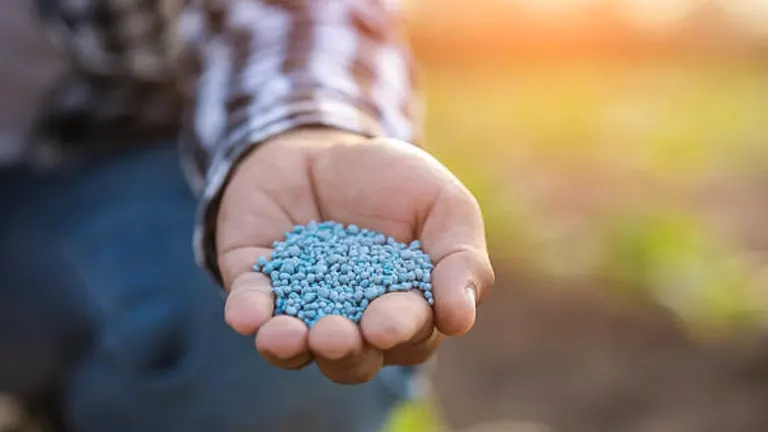
Choosing the right fertilizer is pivotal in the cultivation of healthy dogwood trees, influencing not only their growth and productivity but also the overall soil health.
Types of Fertilizers
- Organic Fertilizers: Made from natural plant or animal materials, including compost, manure, bone meal, and seaweed. These fertilizers release nutrients slowly, enhancing soil microbiome development and improving soil structure.
- Synthetic Fertilizers: Chemically formulated to provide immediate nutrient availability. They are typically higher in nutrient concentration and can be tailored to deliver specific ratios of N-P-K (Nitrogen-Phosphorus-Potassium).
- Slow-Release Fertilizers: These fertilizers release nutrients gradually, reducing the risk of nutrient runoff and leaching, and providing a steady nutrient supply.
- Liquid Fertilizers: Soluble forms of nutrients that are readily available for root uptake, ideal for addressing immediate deficiencies.
Fertilizer Application Techniques
- Granular Fertilizers: Should be evenly distributed under the canopy, avoiding close contact with the trunk to prevent burn risks.
- Liquid Fertilizers: Can be applied directly to the soil or used as a foliar spray, offering rapid nutrient uptake.
Fertilizer Comparison Table
| Fertilizer Type | Release Pattern | Nutrient Concentration | Best Use | Considerations |
|---|---|---|---|---|
| Organic | Slow | Variable, generally lower | Improving soil health | May need supplemental applications |
| Synthetic | Fast | High | Immediate nutrient needs | Monitor for salt buildup |
| Slow-Release | Controlled slow | Moderate to high | Sustained growth support | More efficient over time |
| Liquid | Immediate | High | Quick correction of deficiencies | Requires frequent application |
Choosing the right fertilizer involves balancing immediate nutritional needs with long-term soil health and environmental sustainability. The optimal approach often combines different types, tailored to the tree’s growth stage and soil conditions.
Seasonal Fertilization Schedule
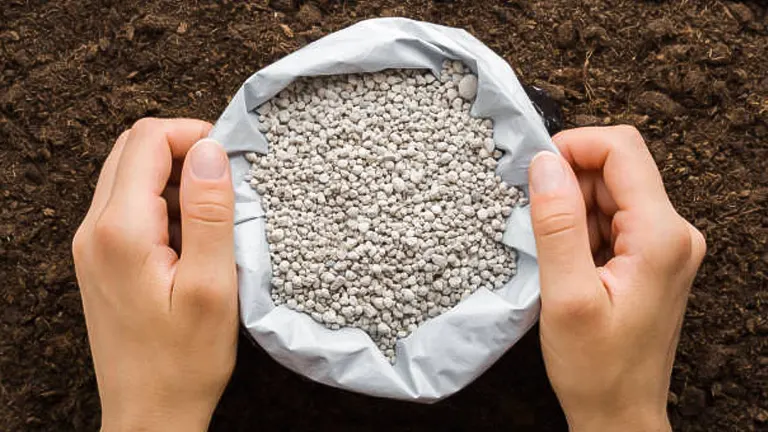
Effective fertilization hinges on applying nutrients at times that align with the dogwoods’ natural growth cycles:
- Early Spring (As Buds Swell): Late February to early March is ideal for the first fertilizer application of the year. Use a balanced 10-10-10 N-P-K ratio fertilizer to kick-start leaf and branch development as the tree exits dormancy. This early boost helps to establish a healthy foundation for the growing season.
- Late Spring (After Initial Leaf Development): A second application in May can further enhance the tree’s bloom potential and root health. If the blooms were sparse the previous year or the tree is young, consider a formula with higher phosphorus content to encourage vibrant flowering and robust roots.
- Autumn (Preparing for Dormancy): In September to October, as the dogwood prepares for dormancy, applying a potassium-rich fertilizer (such as a 5-10-10 blend) can help strengthen the tree against cold weather and diseases, fortifying its overall hardiness through the winter months.
Step-by-Step Guides on How to Fertilize Dogwood Trees
Step 1: Assess Your Dogwood Tree’s Needs
Conduct a Soil Test
- Objective: Determine the pH level and nutrient profile of your soil.
- How to Do It:
- Collect soil from around the drip line of the dogwood tree at a depth of 4-6 inches.
- Send this sample to a local extension office or a soil testing lab.
- Obtain results for pH, nitrogen (N), phosphorus (P), potassium (K), and other vital nutrients.
Examine the Tree for Signs of Nutrient Deficiency
- What to Look For:
- Yellowing leaves might indicate nitrogen deficiency.
- Poor flowering can suggest phosphorus deficiency.
- Brown edges on leaves often point to potassium deficiency.
Step 2: Choose the Appropriate Fertilizer
Selecting the Right Type of Fertilizer
- Options:
- Balanced Fertilizer (e.g., 10-10-10): Good for general care and maintenance.
- High-Phosphorus Fertilizer (e.g., 5-10-5): Use if the tree shows poor bloom production.
- Organic Options (e.g., Bone Meal for Phosphorus, Blood Meal for Nitrogen): Provides slower, more sustainable nutrient release.
Read the Fertilizer Label Carefully
- Purpose: Ensure the fertilizer matches the tree’s specific needs based on the soil test results.
- Key Points:
- N-P-K ratio: Indicates the proportion of nitrogen, phosphorus, and potassium.
- Check for secondary nutrients and micronutrients that could benefit the tree’s health.
Step 3: Calculate the Correct Amount of Fertilizer
Understand Fertilizer Application Rates
- General Rule:
- Use about 2 pounds of fertilizer per 1,000 square feet per application session. This rate might need adjustment based on the specific tree’s size and the soil nutrient status.
Measure the Application Area
- How to Do It:
- Estimate the area under the tree’s canopy (or drip line) where you will apply the fertilizer. For a circular drip line, calculate the area using the formula for the area of a circle:
Step 4: Apply the Fertilizer Correctly
Timing the Fertilization
- When to Fertilize:
- Early Spring: Just before new growth starts as the soil thaws.
- Late Spring: After initial leaf development but before hot summer weather sets in.
- Fall: Several weeks before the first frost to prepare the tree for winter without promoting new growth that could be damaged by cold.
Fertilizer Application Techniques
- For Granular Fertilizers:
- Spread evenly under the tree’s canopy starting a few inches from the base to avoid burning the trunk.
- Rake lightly into the soil and water well to help the nutrients penetrate.
- For Liquid Fertilizers:
- Dilute as directed on the package.
- Apply around the base of the tree, extending to the edges of the tree’s canopy.
Step 5: Post-Application Care
Watering After Application
- Importance of Watering:
- Helps dissolve the fertilizer and carry the nutrients closer to the tree’s roots.
- Ensures that the fertilizer doesn’t burn the tree’s roots or leaves.
Monitoring the Tree’s Response
- What to Watch For:
- Improved leaf color and more robust growth patterns are signs of successful fertilization.
- Any signs of over-fertilization, such as scorched leaves, should be addressed by reducing the fertilizer amount.
Application Techniques for Optimal Uptake
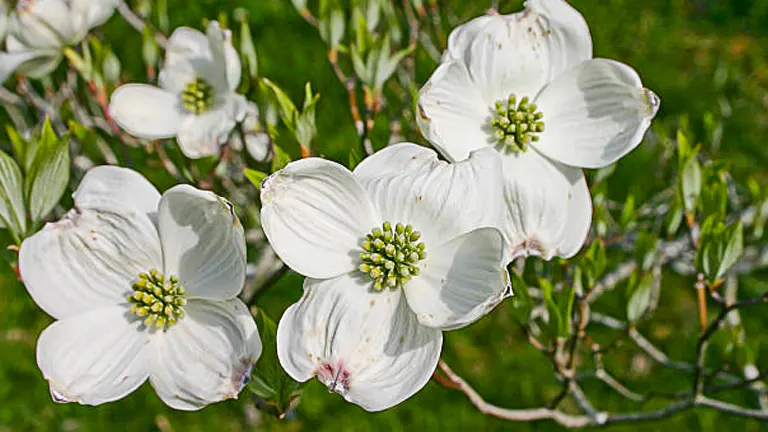
Proper application is essential to ensure that fertilizers deliver the maximum benefit without harming the tree:
- Granular Fertilizers: These should be evenly distributed under the entire canopy, extending out to the drip line—the outer perimeter of the tree’s leaves where water drips onto the ground. It is crucial to avoid piling fertilizer against the tree trunk to prevent root burn. After spreading the granules, rake them lightly into the topsoil and water the area well to activate the fertilizer and encourage deeper infiltration to the roots.
- Liquid Fertilizers: Often preferred for their quick action, liquid fertilizers are best applied directly to the root zone beneath the canopy or used as a foliar spray. This method ensures rapid nutrient uptake, but care must be taken to follow dilution and application guidelines closely to prevent leaf burn.
Adjusting Practices for Tree Health and Environmental Factors
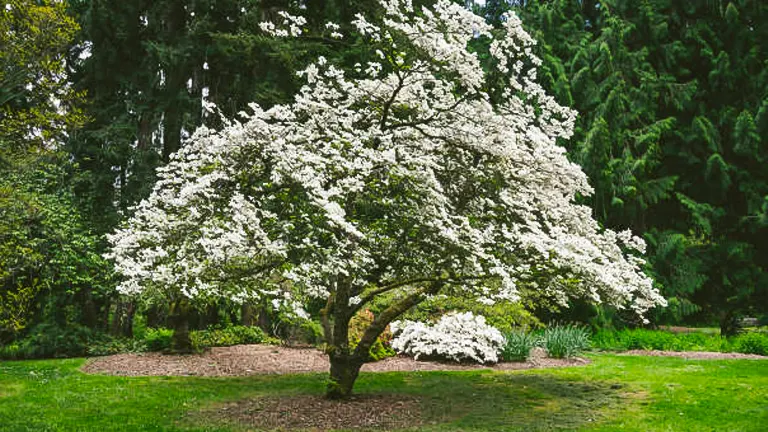
Tailoring fertilizer types and application strategies according to the dogwood’s needs and local environmental conditions can prevent common problems such as nutrient leaching and over-fertilization:
- Slow-Release vs. Quick-Release Fertilizers: Slow-release formulas are generally preferable for ongoing nutrition as they reduce the risk of nutrient burn by gradually supplying small amounts of nutrients. In contrast, quick-release fertilizers are useful for correcting sudden deficiencies, providing immediate relief to nutrient-starved trees.
- Custom Fertilizer Blends: Based on comprehensive soil tests, customizing the fertilizer mix to address specific soil nutrient imbalances can be more effective than off-the-shelf products, particularly for trees displaying signs of nutrient deficiencies.
- Environmental Considerations:
- Weather Events: Post-heavy rainfall, a supplemental light feeding might be necessary to replace leached nutrients, particularly nitrogen which is most susceptible to being washed away.
- Drought Conditions: During dry spells, reduce the amount of fertilizer and increase watering to mitigate stress on the tree and enhance nutrient uptake without risking burn.
Common Mistakes to Avoid
- Over-Fertilization: This is perhaps the most frequent issue, where excessive fertilizer not only leads to nutrient burn but also may encourage lush leaf growth at the expense of flowers. Over-fertilized trees are often less hardy and more susceptible to diseases.
- Incorrect Timing: Applying fertilizer too late in the season can promote new growth that won’t harden off before winter, making the tree vulnerable to cold damage. Ensure all fertilizing is done by late autumn to allow new growth to mature.
- Improper Application Techniques: Fertilizer should never be applied too close to the trunk or piled up around the base of the tree, as this can lead to root burn and subsequent tree health issues.
Holistic Fertilization Strategies
To cultivate resilience and enhance floral displays in dogwood trees, an integrated fertilization regimen that aligns with their physiological needs is essential. The regimen revolves around the lifecycle phases of the tree, each requiring specific nutrient formulations:
- Pre-Bud Break (Late Winter): As the frost recedes and the first signs of spring emerge, applying a balanced fertilizer prepares the dogwoods for the vigorous growth phase. A formula rich in nitrogen helps wake the trees from dormancy, fueling the development of new leaves and branches.
- Post-Leaf Development (Mid-Spring): Following leaf out, a second round of fertilization supports the foundational growth established earlier. During this phase, enhancing phosphorus levels encourages root development and bud formation, setting the stage for abundant blooms.
- Pre-Dormancy (Early Autumn): To fortify the trees for the harsh winter ahead, a late-season application of potassium-rich fertilizer promotes cellular strength and disease resistance, crucial for overwintering success.
Precision in Fertilizer Application

Applying fertilizer with precision is critical to avoid the pitfalls of over- or under-fertilization, both of which can have deleterious effects on dogwood health and aesthetics:
- Technique Matters:
- For Granular Formulations: Broadcast the granules evenly under the entire canopy, reaching out to the drip line but avoiding direct contact with the trunk to prevent chemical burn. This method ensures that the root zone, which spreads approximately as wide as the branches, receives ample nutrients.
- For Liquid Formulations: These should be applied directly to the soil around the roots. If deploying as a foliar application, ensure thorough coverage to maximize absorption while minimizing runoff.
- Timing Is Key:
- Fertilize just before rain is expected, or water thoroughly after application, to help dissolve granules and prevent the volatilization of nitrogen into the atmosphere.
- Avoid fertilizing late in the growing season to prevent new growth that won’t withstand winter temperatures.
Adaptive Fertilization Based on Environmental Feedback
Customizing the fertilization approach based on ongoing environmental feedback and soil health data ensures that dogwood trees not only survive but thrive:
- Environmental Monitoring:
- Regularly check soil moisture and pH levels; dogwoods prefer slightly acidic soil (pH 5.5-6.5). Adjusting pH by adding lime (to decrease acidity) or sulfur (to increase acidity) can significantly impact nutrient availability.
- Observe leaf color and vigor as indicators of nutritional status. Yellowing or poor growth often signals a need for a quick-release nitrogen boost.
- Continuous Soil Testing:
- Conduct bi-annual soil tests to track nutrient fluctuations and tailor the fertilization regimen accordingly. This proactive approach helps anticipate and mitigate potential deficiencies before they impact tree health.
Advanced Techniques and Innovations in Fertilization
Leveraging cutting-edge techniques and innovative products can dramatically improve the effectiveness of fertilization programs:
- Slow-Release Technologies:
- Opt for coated slow-release fertilizers that provide a steady supply of nutrients over several months. These products are ideal for maintaining consistent growth and reducing the risk of nutrient burn.
- Micro-Dosing:
- Apply smaller amounts of fertilizer more frequently—particularly liquid formulations—to manage growth spurts and mitigate the risks associated with heavy, infrequent dosing.
- Enhanced Efficiency Fertilizers:
- Utilize fertilizers that are formulated to reduce environmental losses through leaching or volatilization, ensuring more nutrients reach the tree roots and less impact the surrounding ecosystem.
Related Post
- How to Fertilize a Mango Tree Effectively: Tips and Tricks for Healthy Growth
- How to Fertilize Apple Trees: Essential Tips for a Bountiful Harvest
- How to Fertilize Lemon Trees: Secrets for Thriving Citrus
- How to Fertilize Avocado Tree: A Step-by-Step Guide for Lush Growth
- How to Fertilize Bougainvillea: A Complete Guide for Stunning Blooms
Conclusion
Masterful fertilization practices embody the precision and care necessary to cultivate healthy, vibrant dogwood trees. By integrating systematic nutrient management with tailored application strategies and adapting to environmental cues, gardeners can significantly enhance the aesthetic value and longevity of these cherished ornamentals. The journey from a novice to an expert in dogwood fertilization is marked by an understanding of the tree’s needs, responsiveness to its feedback, and a commitment to sustainable practices. With the right approach, your dogwoods will not only flourish but also become a highlight in your garden for seasons to come.
FAQs
- What is the best time of year to fertilize dogwood trees?
The optimal times to fertilize dogwood trees are in the early spring as new growth begins and again in the fall before the tree enters dormancy. This schedule helps the trees establish nutrients for growth and flowering in the spring, while the fall fertilization helps strengthen them against winter stresses. - What type of fertilizer is best for dogwood trees?
A balanced fertilizer (such as 10-10-10) applied once a year is typically sufficient for dogwood trees. If your soil test indicates deficiencies, you might choose a formula that specifically addresses those needs, such as higher phosphorus content if your tree is not flowering well. - How much fertilizer should I use on my dogwood tree?
Generally, applying approximately 2 pounds of a balanced granular fertilizer per 1,000 square feet of root spread area is recommended. It’s crucial to calculate the spread area under the tree’s canopy accurately to avoid over-fertilization, which can harm the tree. - How do I apply fertilizer to a dogwood tree?
Distribute the granular fertilizer evenly under the entire canopy of the tree, extending to the drip line (the area directly beneath the outer circumference of the tree branches). Avoid piling fertilizer against the trunk as it can burn the tree. After applying, lightly rake the fertilizer into the top layer of the soil and water thoroughly to help the nutrients reach the roots. - Can I use liquid fertilizer on my dogwood trees?
Yes, liquid fertilizers are effective, especially for quick nutrient boosts. They should be applied to the soil around the roots and not directly on the trunk or leaves. Liquid fertilizers typically require more frequent applications than granular types. - What should I do if my dogwood tree shows signs of over-fertilization?
Signs of over-fertilization include scorched looking leaves and halted growth. If this occurs, stop fertilizing and water the area deeply several times to help flush out the excess nutrients. It may also be helpful to aerate the soil around the tree to increase water penetration. - How can I tell if my dogwood tree needs more fertilizer?
Symptoms of nutrient deficiency in dogwood trees include yellowing or pale leaves, slow or stunted growth, and poor flowering. If you notice these symptoms and it’s been a while since your last fertilization, it might be time to fertilize. However, always perform a soil test first to confirm that the symptoms are due to nutrient deficiency rather than other causes like disease or overwatering. - Is it necessary to fertilize young dogwood trees more frequently?
Young dogwood trees do benefit from more frequent fertilization as they establish. Fertilizing young trees lightly but more often helps promote a strong root system and healthy early growth. Consider reducing the amount of fertilizer per application but increasing the frequency to once in the spring and again in mid-summer for the first few years.
With proper fertilization, your dogwood trees will thrive, enhancing your garden with vibrant growth and beautiful blooms. Follow these guidelines to ensure your trees remain healthy and stunning throughout the year.

Benjamin Brooks
Forestry AuthorGreetings! I'm Benjamin Brooks, and my journey over the past 15 years has revolved around the fascinating realms of content creation, expertise in snow clearing, and the intricate world of lumberjacking and landscaping. What began as a simple curiosity about the natural world and heavy machinery has evolved into a passionate profession where my love for crafting words intertwines seamlessly with my lumberjacking and garden skills.






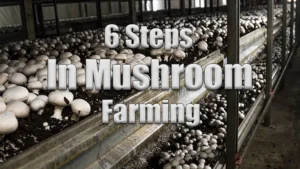



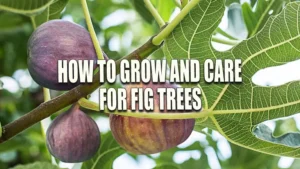


Leave your comment